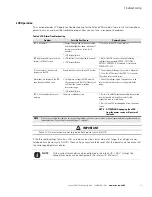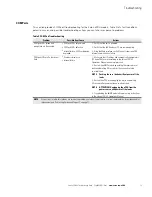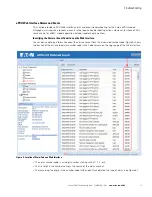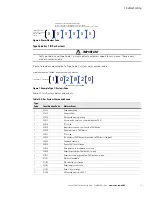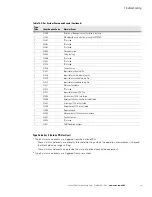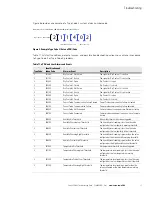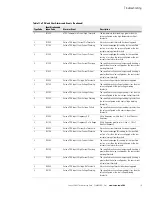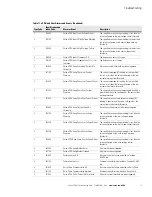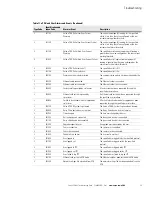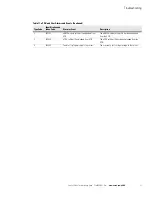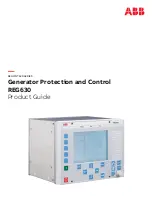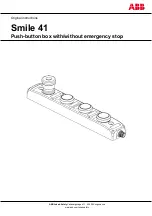
Introduction
Eaton ePDU G3 Troubleshooting Guide P-164000278—Rev 1
www.eaton.com/ePDU
6
Resolving Problems
After the issue is identified and isolated, try to determine the root cause and then resolve the problem. For
example, the issue may be a physical or mechanical problem, a problem with connectivity, or a problem with
the existing settings for value ranges and thresholds.
First, check the troubleshooting reference tables in “Troubleshooting” on page 10 in this document. There are
eight tables associated with different categories of problems.
Find the table that is associated with the type of problem you are investigating, including the following:
l
Power Outlets
l
Chassis and Installation
l
Circuit Breakers
l
LCD Alarms
l
COM Ports
l
ePDU Web Interface Alarm and Events
l
Error Messages
l
Accessories
Most troubleshooting tables define problems or specify interface messages, provide possible root causes, and
suggest actions that may help you solve problems. The alarms and events table provides the alarm/event
identification code and name, a description of the alarm/event, and suggested troubleshooting actions.
If you cannot find a resolution to a problem in the tables, contact customer service or a local representative for
guidance or product part replacement.
Clearing Alarm Notifications
The are several ways to clear alarm notifications. For example, you can clear the event logs using the Web
interface or suppress blinking alarm indicators on the ePDU.
Clear the Web Interface Event Log
To clear the Web interface Event Log, go to the ePDU Web interface menu bar and select “Logs” under “Logs
& Notifications.” The “Logs” page displays the current Event Log. Click
Clear
.
Suppress ePDU Alarm Indicators
To suppress ePDU alarm indicators, such as blinking LCD alarm displays, touch any control button on the panel.
NOTE
Not all alarms or events need to be cleared. Some alarms automatically clear when
the condition resolves. For example, if a load over current alarm is generated, the
alarm is cleared when the current drops 0.25A below the level (alarm hysteresis).

















